The Edmonton Police Service’s Strategic Plan is the overarching strategy that identifies the priority areas for the Service. It is a culmination of extensive engagement with the communities it serves. Shaped by direction from the Edmonton Police Commission, ongoing dialogues with community groups, consultations with arms of government and law enforcement agencies, collaborations with social service agencies and non-profits, as well as feedback from EPS employees.
The 2023 – 2026 Strategic Plan reflects the collective vision, ensuring that EPS aligns with the values and expectations of the people it serves by defining clear goals and outcomes for this period. There are five goals articulated in the Strategic Plan.
2023 – 2026 STRATEGIC PLAN
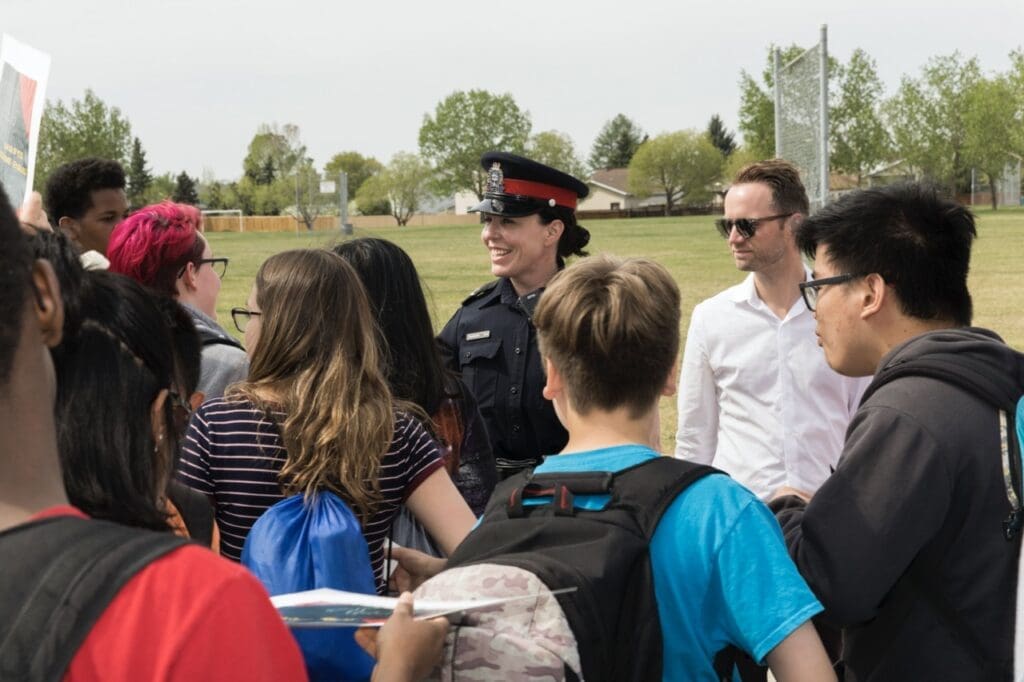
BALANCE SUPPORT AND ENFORCEMENT
What it means: Understand individual circumstances and ensure people are appropriately transitioned to systems that provide support and/or enforcement to increase community safety.
How EPS determines if the Service is reaching its intended goals.
INDICATORS
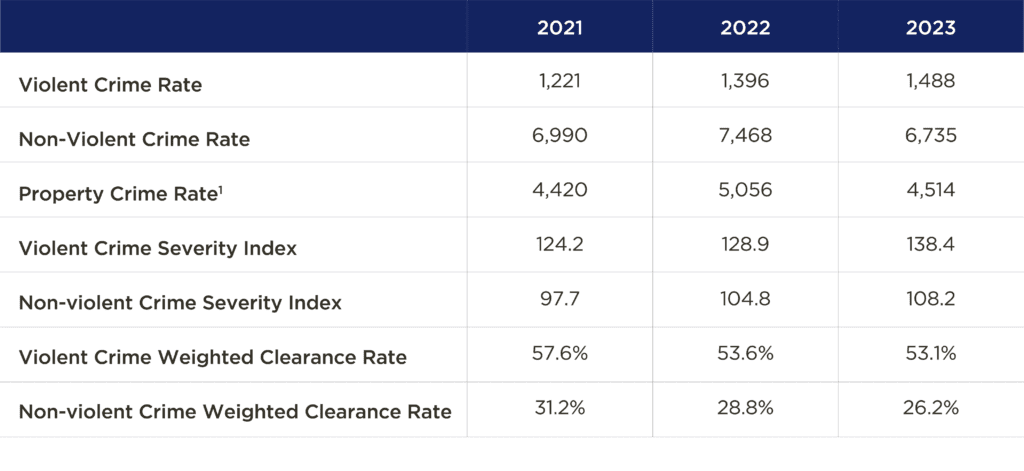
How EPS determines if the Service is reaching its intended outcomes.
MEASURES
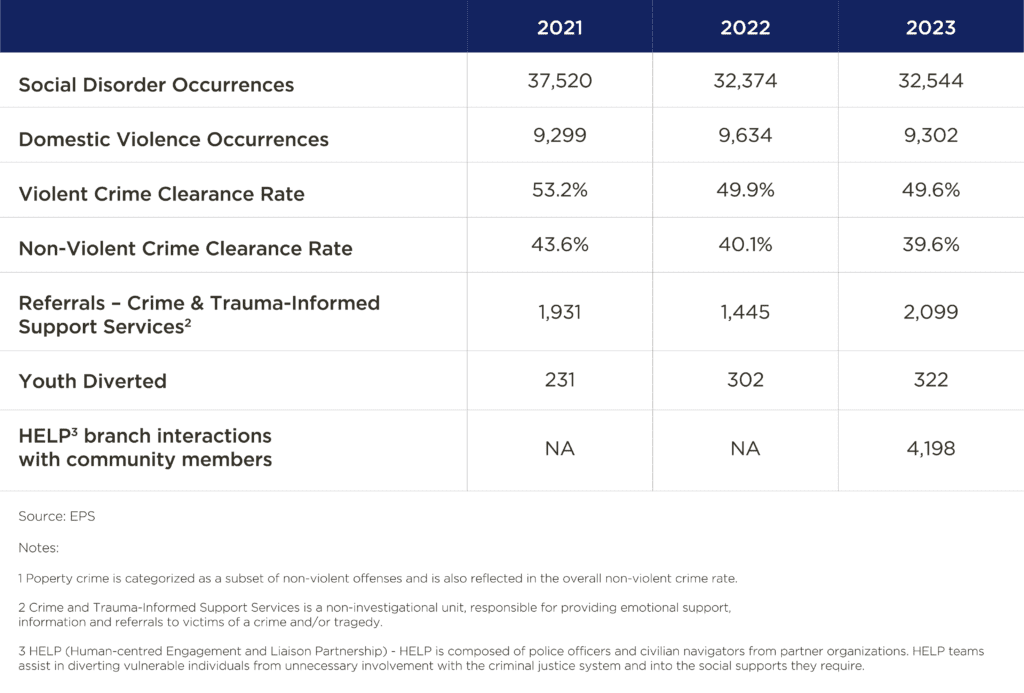
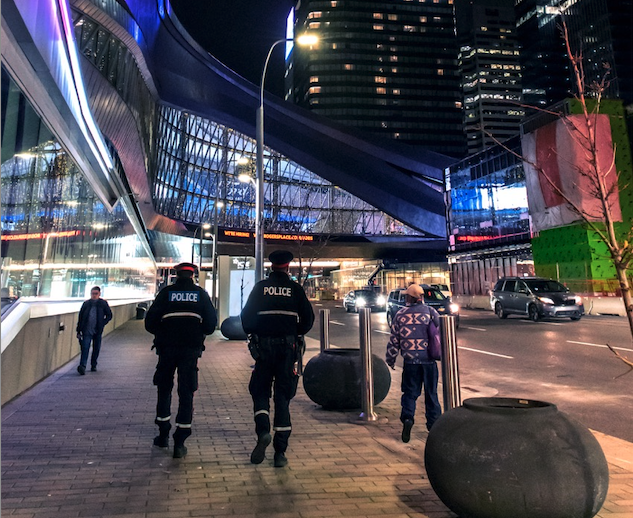
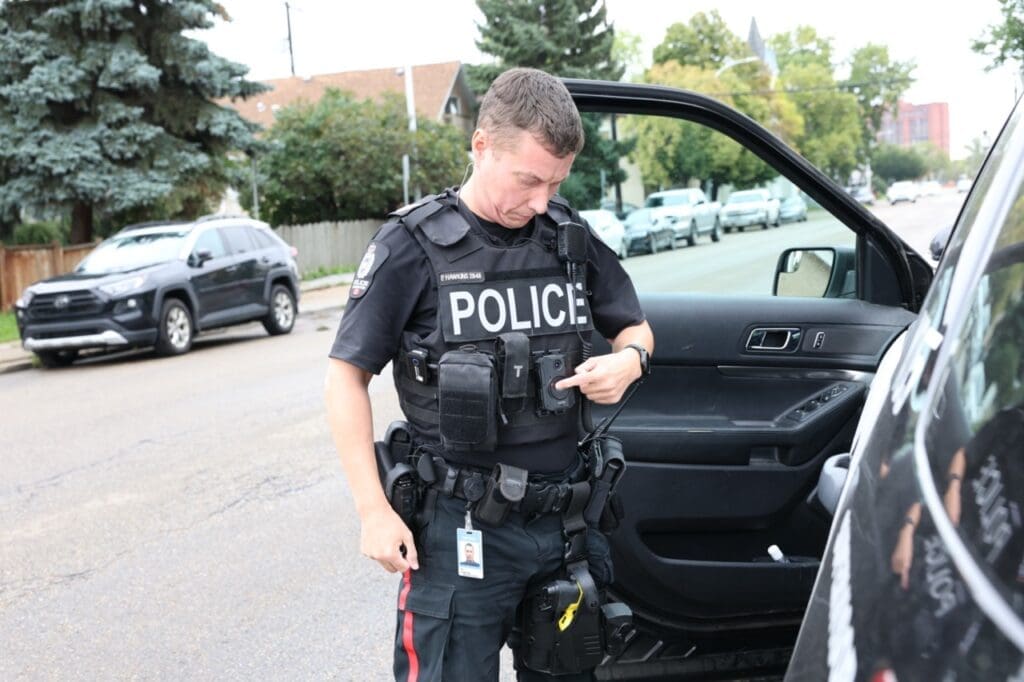
EPS BEGINS POLICE BODY WORN CAMERA TRIAL
In March 2023, the Alberta Government mandated the use of body worn cameras by all police officers. Working towards this mandate, the Edmonton Police Service (EPS) began a six-month trial of body worn cameras on July 10, 2023. In total, 35 officers working with Transit and Community Safety Teams, the Healthy Streets Operations Centre (HSOC) Community Safety Teams (CST) and the High-Risk Encampment Teams (HRET) will wear cameras. The EPS will trial various technologies to determine what capabilities best meet the organization’s needs and will then issue a request for proposal to select the most suitable vendor.
Citizens interacting with officers on these teams will notice a camera affixed to the front of their uniforms. The cameras are the approximate size of a deck of playing cards and officers will begin recording when they start a public interaction such as when they start investigating an individual; or when they are asking a person a question for the purpose of collecting their information. While not legally required to do so, officers will do their best to advise citizens when they are being recorded.
The goals of body worn cameras are multifaceted, but overall aim to create a more efficient accountability process and reduce use of force incidents for both officers and the public. Some of the anticipated outcomes include increasing transparency, reducing unfounded allegations of police misconduct, increasing public trust and confidence in the EPS and enhancing officer accountability and professionalism.
The goals of body worn cameras are multifaceted, but overall aim to create a more efficient accountability process and reduce use of force incidents for both officers and the public.
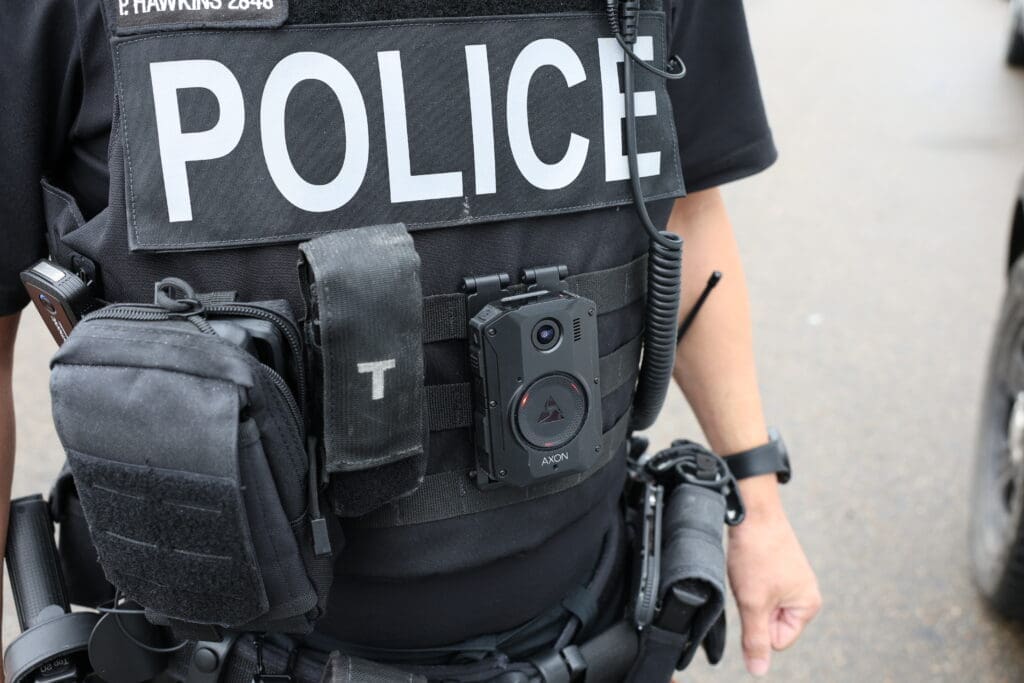
ON TRAC FOR
COMMUNITY SAFETY
In May 2023, the Edmonton Police Service Transit and Community Safety Teams (TRACS) began working in LRT stations and around transit hubs to address increased crime and disorder.
Working closely with City of Edmonton Transit Peace Officers and social agencies like Bent Arrow, the TRACS teams work to provide a measured and balanced response to address crime and disorder while working with community partners to connect people in need to services and social support. There are three TRACS teams with plans to expand that number to six by the end of 2024.
STANDING UP FOR SAFER PUBLIC SPACES
Safer Public Spaces describes the ongoing focused work of EPS with various partners, agencies, and within the health system to ensure violence and social disorder is addressed promptly and adequately. This includes addressing open-air drug use in public spaces. It is based on the foundational principle that all public spaces must be maintained for the safe and appropriate use of all. Learn more about Safer Public Spaces by watching the multi-agency announcement.
EPS’ Major objectives for Safer Public Spaces:
1. Reduce the unacceptable levels of violence, particularly random violence, by addressing all factors contributing to victimization, much of which is closely linked to the drug trade.
2. Effect sustainable behaviour change within public spaces, including the visible use of drugs.
3. Offer support for those who are victimized and links to treatment where willing.
4. Aggressive enforcement of those who are supplying and carrying out the drug trade, who often target and victimize the most vulnerable of Edmonton’s community members.
5. Work with the City of Edmonton to address the unacceptable levels of violence, victimization, and public safety threats tied to encampments.
HELP EXPANDS CITYWIDE
With Government of Alberta funding, the Edmonton Police Service’s Human-centred Engagement and Liaison Partnership (HELP) Unit recently expanded to EPS Patrol branches across Edmonton, with a triage system to manage the complex needs of those struggling with addictions, mental health issues, and houselessness.
HELP branch teams are made up of EPS officers and social agency navigators who engage directly with vulnerable individuals, and enable frontline Patrol officers to concentrate on crime and public safety responsibilities.
In 2023, the new HELP branch teams have had 4,198 interactions with the vulnerable individuals. Since 2021, the core HELP team has assisted with:
The expansion of HELP citywide is crucial to creating Safer Public Spaces which became possible with the collaboration and dedication of EPS social agency partners.
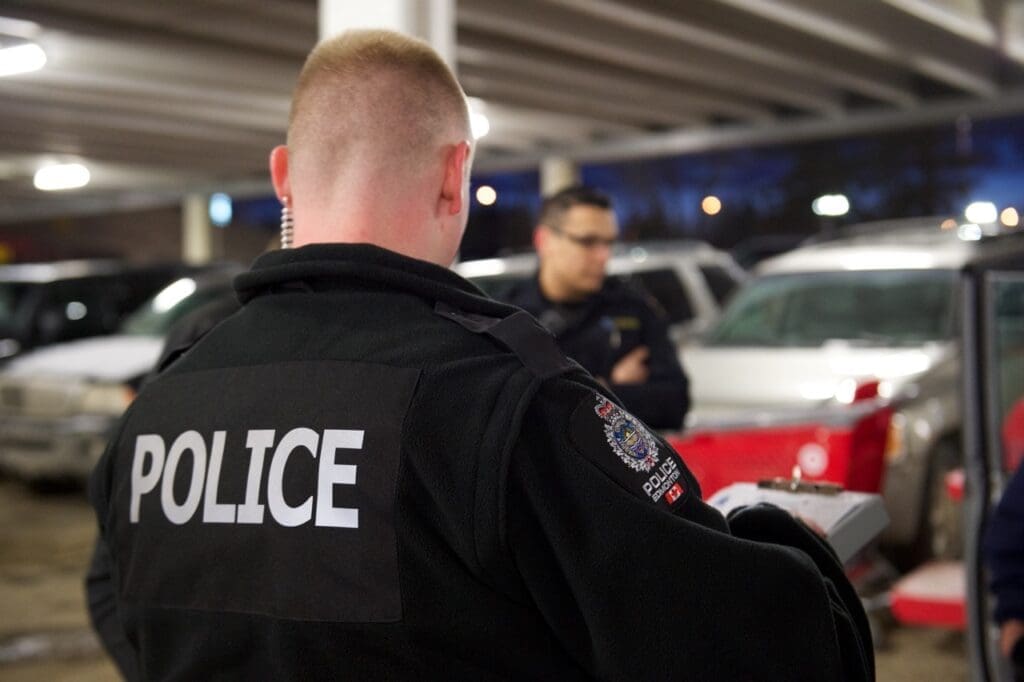
DNA REANALYSIS LEADS TO CHARGES
IN 27-YEAR-OLD HISTORICAL HOMICIDE
The Edmonton Police Service (EPS) has charged a man in the 1996 murder of a 24-year-old woman.
On December 25, 1996, police were called to the woman’s apartment at 34 Street and 119 Avenue after her family had been unable to reach her and became concerned. She was found deceased inside the apartment. A December 26, 1996, autopsy determined the manner of death was homicide.
While numerous exhibits were tested forensically over the years, a confirmed match to a suspect could not be made. On October 22, 2022, the RCMP forensic laboratory re-examined the exhibits and a male DNA profile was generated and linked to a male suspect. On June 14, 2023, EPS arrested and charged the 48-year-old, who was 22 at the time of the murder, and known to the woman, with first degree murder.
“Our hearts go out to her family and friends. This was a tragic file that has plagued them with grief and unanswered questions for 27 years,” says Det. Kevin Harrison, with the EPS Historical Crimes Section. “Thanks to the tenacity of the forensic specialists at the RCMP lab and the EPS investigative team, we have at long last been able to provide some answers to those questions, and hopefully some degree of closure for her loved ones.”
EPS GANG SUPPRESSION TEAM
AND GUNS & GANG STRATEGY
In 2019, the Edmonton Police Service (EPS) Gun Crime Violence Reduction Strategy was developed and primarily sought to strengthen EPS capabilities and capacity to close identified deficiencies in firearm investigations, firearm intelligence, firearms evidence collection processes, and policies and procedures.
Gun violence remains a significant public safety concern for the EPS and is the reason the Service continues to work on the Guns and Gangs Strategy 2023-2025.
The strategy lays out a three-year plan to address firearm violence and gang-related crime in the city through three pillars: focused deterrence, investigative excellence, and young people intervention.

It includes short- and long-term solutions that hold those responsible for violence and criminal activities accountable while bolstering EPS’ investigative process, enhancing cross-agency collaboration, and exercising focused deterrence to persuade frequent offenders to exit criminal lifestyles.
The strategy includes the addition of 19 officers to bolster the Organized Crime Branch and increase capacity to address gang activities, shootings and other firearms offences, drug trafficking, extortion and other crimes perpetrated by criminal networks. This will be funded over 2024-26.
Sgt. Ryan Ferry awarded for guns and gangs suppression efforts

Organized crime enforcement, intervention, diversion, suppression, community engagement – it all speaks volumes to the work Sgt. Ryan Ferry has done to contribute to reducing gang and violence activity in the community.
In October, Sgt. Ferry was awarded the Jim Aspiotis Memorial Award
Disarming Edmonton Gangs
In October, Sgt. Ferry and the Gang Suppression Team were featured in a special three-part series produced by Global News called Disarming Edmonton Gangs.
SERVICE AND SACRIFICE:
HONOURING OUR HEROES IN BLUE
Charges laid in line of duty deaths
Amidst the profound grief following the loss of Constables Travis Jordan and Brett Ryan, the community found solace in the dedication and swift action of the EPS. In November, thanks to the tireless efforts of a highly skilled team of officers, EPS made an arrest and laid charges in the case. This accomplishment stands as a testament to the unwavering commitment and professionalism of the EPS.
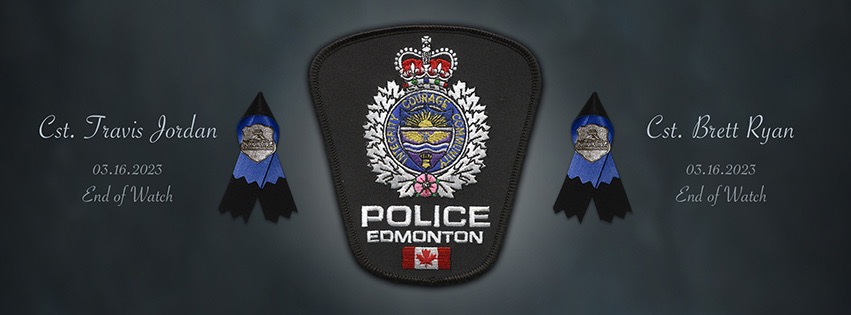

03.16.2023

03.16.2023
EPS OFFENDER MANAGEMENT APPROACH DELIVERS RESULTS
The Edmonton Police Service’s (EPS) Integrated Offender Management (IOM) Program is based on research which indicates that addressing an offender’s criminogenic risks and needs can reduce the likelihood of reoffending by as much as 40%. This program has three pillars:
The EPS’ Identification and Selection Unit (ISU) utilizes the Offender Identification Matrix to determine which offenders will become IOM clients. ISU selects individuals from the Matrix that commit the most aggregate harm in the city. IOM Officers then work with these offenders using individualized case plans to reduce their instances of offending and the severity of offences they commit, by holding them accountable for any further offences.
IOM Officers have access to social service facilitators and social service providers that form a community service support team. This support team connects the offender with resources to address their needs. IOM works closely with partner agencies to address their basic need such as housing, income support, employment searches, resume building, and access to food banks. To address criminogenic needs (like reducing anti-social behaviour, increasing pro-social leisure time, better family relationships, and reducing substance use), facilitators can connect offenders to mental health and addiction supports for longer-term therapy.
IOM Officers use enforcement tactics when managed offenders relapse into criminality. IOM develops close relationships with both the Crown Prosecutors and Defense counsel and share information on the offender’s behaviour, risks, needs, and compliance. This helps to hold the offender accountable.
In 2023, an evaluation of offender behaviour was conducted based on a sample size of 100 IOM caseloads for the period spanning 2020 – 2022. The key results indicated that there was:
Overall, the program is achieving exceptional results that are leading to positive changes and benefits for offenders and communities.
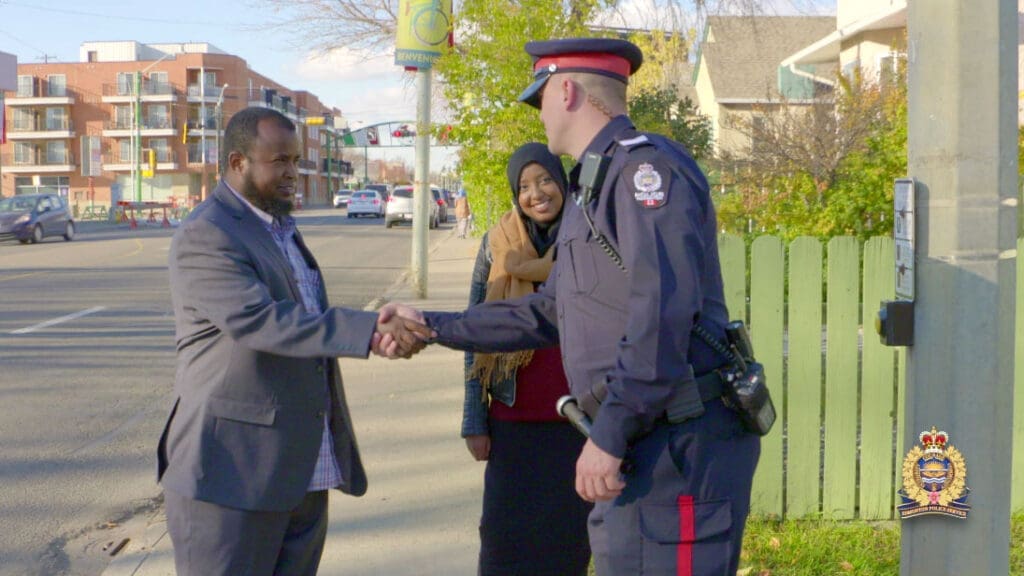
PARTNER AND ADVOCATE
What it means: Use EPS knowledge and expertise to facilitate effective strategic partnerships that together drive community safety.
How EPS determines if the Service is reaching its intended outcomes.
MEASURES
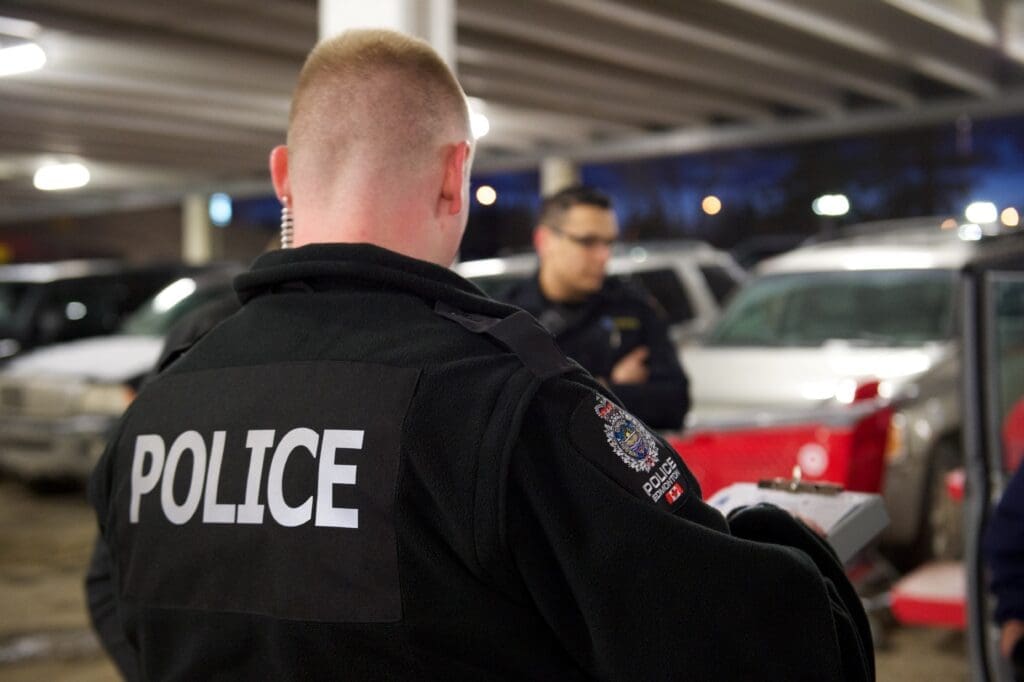

PROVINCE DEDICATES 12 SHERIFFS TO HELP
DETER CRIME AND DISORDER IN HOT SPOT AREAS
The province allocated 12 Sheriffs to execute crime-suppression patrols in areas covered by the Healthy Streets Operation Centre (HSOC) Community Safety Teams and other high problem areas. HSOC has been focusing on the areas of Chinatown, Alberta Avenue, the Downtown core and certain Downtown LRT Stations but to date has had to backfill with officers from crime suppression teams across the city.
The teams’ daily goal of high visibility and increased community engagement allowed for more intervention opportunities in a timely manner. These extra resources enable the EPS to provide seven-day HSOC zone coverage and for 20-hours a day. The last shift of the Edmonton Police Service-Alberta Sheriff partnership wrapped up in December.
EPS-ALBERTA SHERIFFS TEAMS BY THE NUMBERS:
INDIVIDUALS
CHARGED
WARRANTS
EXECUTED
VALUE OF PROPERTY
RECOVERED
PEOPLE DIVERTED
TO SHELTERS
VALUE OF ILLEGAL
DRUGS SEIZED
WHAT IS THE HEALTHY STREET OPERATIONS CENTRE?
As the EPS thanks the Sheriffs for stepping up, HSOC continues as a partnership between EPS, City of Edmonton, Alberta Health Services, Edmonton Fire Rescue Services, Bent Arrow Traditional Healing Society, REACH Edmonton, and Homeward Trust. Together, we aim to reduce criminality and victimization, help community members feel safe living, working and being in the area, and improve the health and wellness of all people living in the area. Since November, the HSOC teams – including frontline police officers, Community Safety Officers, peace officers, community safety liaisons, and paramedics, have spent over 600 – hours per month working together in the area.
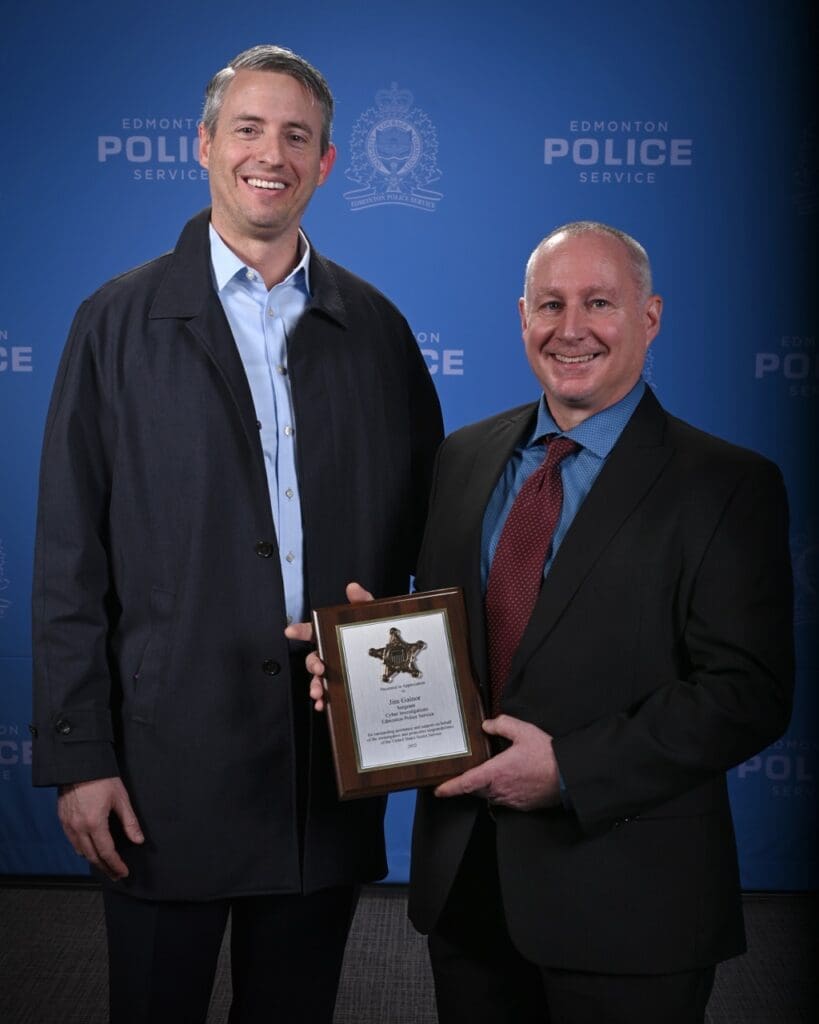
PARTNERSHIP WITH EPS VITAL
TO U.S. SECRET SERVICE MISSION
The United States Secret Service (USSS) presented Edmonton Police Service Detective James Gainor, Cyber Crime Investigation Unit, with an award of appreciation during a recent visit to Edmonton to recognize his ongoing “assistance and support.”
“Being a federal agency from the United States, we don’t have any jurisdiction in Canada. Having these partnerships with the EPS... is vital to our mission.”
Eric Adams, Resident Agent in Charge, United States Secret Service
SAFETY OF OUR CITIES CONFERENCE
In September, the Edmonton Police Service and Edmonton Police Foundation hosted the inaugural Safety of Our Cities Conference as an opportunity for members of the public safety community, partners, and stakeholders to come together and share their insights, experience, expertise, and solutions for the complex problems facing our cities today. Many of the safety issues facing communities from around Canada and North America go beyond the criminal justice system and into other areas like addictions, mental health, and health care. The goal of this event was to bring those areas together to talk about real solutions for social disorder, violence, crime, and victimization on our streets.
Other responses from the conference participants:
CONFERENCE
SESSIONS
STAFF
& VOLUNTEERS
SURVEY RESPONDENTS WERE SATISFIED
OR STRONGLY SATISFIED WITH THE CONFERENCE
DIFFERENT AGENCIES
ATTENDED THE CONFERENCE
CONFERENCE STAFF
AND VOLUNTEERS
OF RESPONDENTS STATED THEY DISCOVERED A POTENTIAL SOLUTION TO A CHALLENGE
FACED BY THEIR ORGANIZATION AT THE CONFERENCE
NEW INTEGRATED CARE CENTRE TEAM
OPENS IN EPS POLICE HEADQUARTERS
The former Edmonton Police Service (EPS) headquarters holding cells have been repurposed to provide a safe place for intoxicated individuals to be lodged when they are experiencing mental health and substance use challenges.
The newly named Integrated Care Centre’s (ICC) purpose is to provide detainees arrested for public intoxication, who are unable to care for themselves or be released to a responsible adult, with a space to recover and connect with appropriate support. The ICC is staffed by Community Peace Officers and paramedics on a 24/7 basis. It also operates an on-site partnership with Radius Health to assist detainees in forming a long-term care plan that extends beyond release, integrating health practitioners and other wraparound services in the future.
By the numbers:
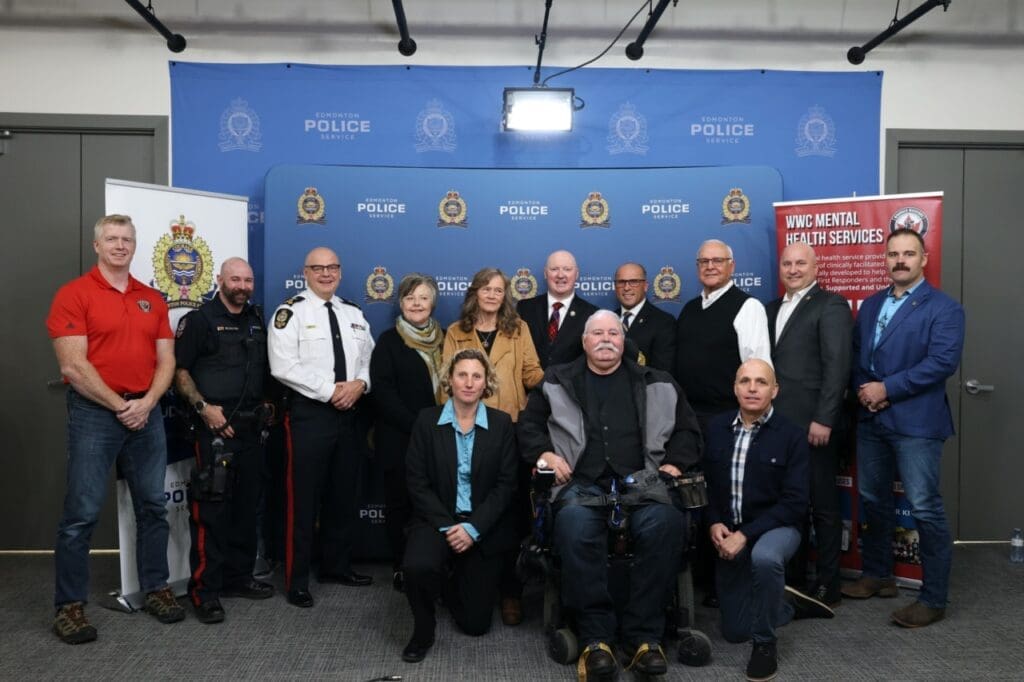
EDMONTON POLICE SERVICE PARTNERS
WITH WOUNDED WARRIORS CANADA
In October, the Edmonton Police Service’s (EPS) Employee and Organizational Wellness Branch announced a partnership with Wounded Warriors Canada (WWC) that will offer innovative mental health programs and services to EPS members and their families.
Through the partnership, WWC will work closely with the EPS, Edmonton Police Association (EPA), and Edmonton Police Service Veterans Association (EPSVA) to offer services to all of EPS’ active and retired professionals, including support for family members such as kids’ programs and camps. Services come at no cost to the Service, EPA, EPSVA, or, most importantly, members and their families.
LAND ACKNOWLEDGEMENT
Treaty 6 Territory ᐊᒥᐢᑿᒌᐚᐢᑲᐦᐃᑲᐣ Métis Region 4.
We are located in amiskwaciwâskahikan (Beaver Hills) on Treaty 6 territory and Métis Region 4. Edmonton Police Service recognizes that the relationships between policing and Indigenous communities is complex and requires considerable work to address. On the path towards reconciliation, it is essential to acknowledge the truth of our placement on the land which the signing of the treaties are responsible for. Without this understanding and agreement of land sharing, Canada would not exist as it does today. In recognition of the commitment between the Crown and sovereign Indigenous communities, the Edmonton Police Service would like to acknowledge the people and the agreement of Treaty 6 signatories, home to centuries of Indigenous Peoples, including but not limited to the Cree, Dene, Anishinaabe, Blackfoot, Papaschase, Nakota Sioux, and the Métis Peoples. As we are all Canadians, we are all Treaty people.
Police Headquarters
9620 – 103A Avenue
Edmonton, Alberta, Canada
T5H 0H7
© Edmonton Police Service 2024 | All Rights Reserved | Design by destroythebox
Police Headquarters
9620 – 103A Avenue
Edmonton, Alberta, Canada
T5H 0H7
© Edmonton Police Service 2024 | All Rights Reserved | Design by destroythebox